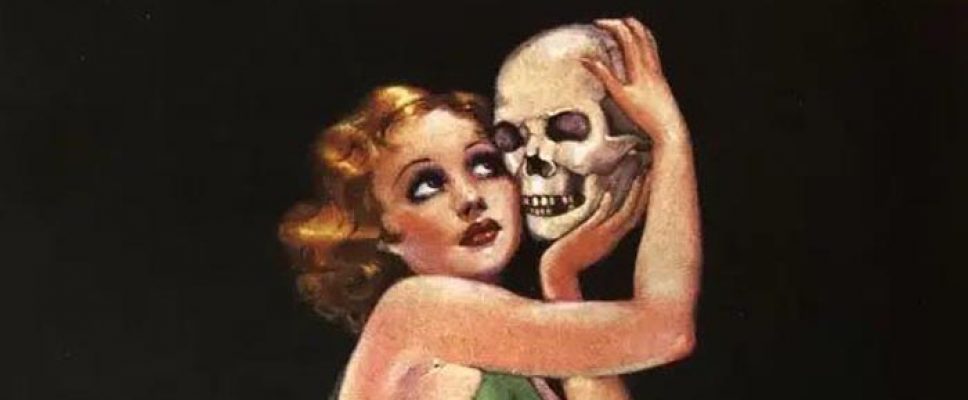Book Review: The Alluring Art of Margaret Brundage
Wow. Just wow. “The Alluring Art of Margaret Brundage” is a gorgeous, lavishly illustrated history of one of the great, forgotten cover artists of the 1930’s pulp magazines.
 Artist Margaret Brundage lived an interesting, challenging life but what she is remembered for today are her pulp magazine covers, mainly for Weird Tales. This history reproduces virtually all of her Weird Tales covers along with covers done for other pulps and a smattering of other art.
Artist Margaret Brundage lived an interesting, challenging life but what she is remembered for today are her pulp magazine covers, mainly for Weird Tales. This history reproduces virtually all of her Weird Tales covers along with covers done for other pulps and a smattering of other art.
If you’ve always believed that magazine covers of the 1930’s were dull because kinky sex didn’t exist way back then (postal regulations don’t you know), you are wrong. Sex has always sold magazines and lurid stories need sexy covers. In 1932, Margaret Brundage, purely by accident, stepped onto the scene with her lush pastel chalk artwork of virtually or entirely naked women being menaced by other virtually naked women, savages and barbarians, demons, evil statues, snakes, and predatory beasts.
The publisher of Oriental Stories was smitten when she walked in one day with her portfolio. Where had she been all his life with her carefully detailed, luminescent-fleshed damsels in distress? He didn’t know until that moment he had been looking for soft-focus, softcore porn to sell magazines. How he got those illustrations past the post office censors and onto newsstands across the country is a mystery.
 Leafing through the book is an exercise in saying over and over “Oh my God. Look at this one.” After the initial shock wears off, you’ll be able to see how Weird Tales liked to pair Margaret with Robert E. Howard, H. P. Lovecraft, August Derleth, Seabury Quinn and a host of other pulp greats. She matched them so well! What would Conan the Barbarian do without terrified naked damsels to rescue? Her cover art for Howard’s story Red Nails is definitely one for the ages.
Leafing through the book is an exercise in saying over and over “Oh my God. Look at this one.” After the initial shock wears off, you’ll be able to see how Weird Tales liked to pair Margaret with Robert E. Howard, H. P. Lovecraft, August Derleth, Seabury Quinn and a host of other pulp greats. She matched them so well! What would Conan the Barbarian do without terrified naked damsels to rescue? Her cover art for Howard’s story Red Nails is definitely one for the ages.
Nobody illustrated curvaceous flesh like Margaret; sensuous, living bodies captured in that most fragile of mediums, pastel chalk. Her men look good too.
If you need to justify gaping at naughty pictures by reading, there is plenty of text to go along with the full-page illustrations. You’ll find Margaret’s biography, information about the pulp era, the difficulties faced by Weird Tales and the move to New York that damaged Margaret’s career (pastel chalk, it turns out, doesn’t ship well), interviews, even an extensive discussion of the radical politics in 1930’s Chicago. Margaret lived a fascinating life.
If you’re interested in the pulps, Chicago in the 1930’s, or book and magazine covers, this is a terrific resource.
My only complaint is that I wanted to see more of Margaret Brundage’s art. Unfortunately, chalk pastel is probably the most fragile art medium there is and pulp magazines were ephemera to be read and thrown out. Who knows what Margaret Brundage treasures still lurk in attics, waiting to be rediscovered? She also had a career after Weird Tales left Chicago, but not much of it was reproduced in the book. I understand. The focus was on her pulp magazine covers. Nonetheless, if there was space for a discussion of radical Chicago politics, there was space for more of her other art.
If you’d like to learn more about Margaret Brundage, the Illustration History website has a page devoted to her. She also has a Wikipedia page.
